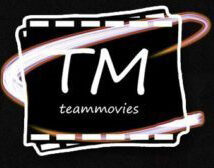The Last House on the Left
After settling their affairs, Emma (Monica Potter) and John Collingwood (Tony Goldwyn), and their daughter, Mari (Sara Paxton), head out on vacation to their lake house. Shortly thereafter, Mari borrows the family car and drives into town to spend some time with her friend Paige (Martha MacIsaac). While Paige works the cash register at a local store, she and Mari meet Justin (Spencer Treat Clark), a teenager passing through town who invites them both back to his hotel room to smoke some marijuana. While the three are hanging out in the hotel room, Justin’s family members return: Krug (Garret Dillahunt), Justin’s father; Francis (Aaron Paul), Justin’s uncle; and Sadie (Riki Lindhome), Krug’s girlfriend.Krug shows Justin a local newspaper that has Krug’s and Sadie’s pictures on the front page, and which explains how Sadie and Francis broke Krug out of police custody and killed the two officers that were transporting him. Believing it too risky to let Paige and Mari go, the gang kidnaps them and uses their car to leave town. While Krug searches for the highway, Mari convinces him to take a road that leads to her parent’s lake house; Mari then attempts to jump out of the vehicle, but the ensuing fight among the passengers causes Krug to crash into a tree. Frustrated by Mari’s attempt at escape, Sadie and Francis proceed to beat Mari as she crawls from the wreckage. Krug attempts to teach Justin to “be a man” by forcing him to fondle Mari’s breasts. When he refuses, Krug rapes Mari. Paige begins insulting him to get him to stop; in response, Krug stabs Paige with a knife and Mari watches her friend bleed to death. Afterward, Mari musters enough strength to escape the group and make it to the lake so that she can swim to safety. Before she can swim far enough Krug shoots her in the back, leaving her to bleed out in the lake.
A storm forces Krug and his gang to seek refuge with John and Emma, whose house is nearby. Justin soon realizes that they are Mari’s parents, and intentionally leaves Mari’s necklace on the counter to alert them about their daughter. When John and Emma find Mari barely alive on their porch, and the necklace on the counter, they realize that the people who did this to Mari are in their house. As they try to find the key to their boat so that they can take Mari to the hospital, they decide to get revenge on those responsible. When Francis happens upon Mari he is attacked and killed by John and Emma. When the couple go after Krug and Sadie, they find Justin in possession of Krug’s gun; Justin gives the gun to John so that he can kill Krug. Sadie awakens and interrupts John, allowing Krug to escape from the couple: he then realizes that they are Mari’s parents. After Emma shoots Sadie in the head, John chases Krug. With a combined effort from Emma, John, and Justin, Krug is knocked unconscious. John paralyzes Krug from the neck down, and leaves him to die with his head in an active microwave oven; then he, Emma, Mari, and Justin take the boat to the local hospital.
{loadposition tickers}
An early draft for the remake had moved the setting to northern California, and altered the third act to include elements of the supernatural. When that script was rejected, Carl Ellsworth was brought in to touch up the script written by Adam Alleca. Ellsworth had previously worked with Craven on Red Eye, but had never seen the original Last House on the Left. After reading the script and watching the 1972 film—the latter he found difficult to watch because of its extreme nature—Ellsworth decided that the first thing they needed to do was to establish someone whose survival you wanted the audience to root for. The writer wanted to know how the “typical family” would react to such a heinous act being perpetrated on their daughter, and what they were truly capable of. Craven points out that most of the early script problems were based around deciding what elements to include. They were never sure how much of the Krug family needed to be seen, what elements from the original film should be included, or even if Mari should live or die.
One of the changes that Ellsworth made was keeping Mari alive, as the character is found dead in the original film. The writer believes keeping Mari alive when her parents find her adds to the suspense, because there is now a “ticking clock” for the parents to get their daughter to the hospital. Another change to the character was making her a swimmer. Director Iliadis wanted to give Mari a “big character trait” that could be used as a coping mechanism for the character, as well as become an important component to her escaping Krug.
As Iliadis explains, “Well the idea was to find something where she channels all her energy and that was a big character trait because her brother is dead. It’s like she’s carrying him on her back. She needs to perform for two people now. She has to compensate for him so all her energy is in the water. The only area where she feels slightly free is when she’s in the water swimming like crazy, so it’s interesting having that as a character trait, and then having that as a key element for her trying to escape.”The writer changed the fate of another character, Krug’s son Justin attempting to give the audience a better “sense of hope”. Craven points out that early on he suggested that Krug have a son who commits suicide, but found it interesting to see “this strange Romeo and Juliet thing happening” between Krug’s son and Mari. He also stated that he likes the fact that John Collingwood is a doctor who actually gets to use his skills in the film, unlike in the original where the character is merely identified as being a doctor. Craven comments, “it is an extraordinary moment” when John is forced to improvise a way to restore a collapsed lung; “It made it real.” Ellsworth wanted to create a level of interest in the characters that would “engage [the audience]”, as opposed to simply leaving the family in “even worse shape by the end of the movie”. He asserts that the film does not have a happy ending, but that there is some hope left at the end. Director Dennis Iliadis further explains that the point is to show the family from a different light. Initially the director feared that they were “wussing out” with the ending; he eventually decided that what you really see is a family that has physically survived this encounter, but are “dead in many ways”. Iliadis expressed that he did not want to go the way of “torture porn”, which is what he sees most horror films moving toward, but instead show a sense of “urgency” with the parents’ actions.
Craven chose to give Iliadis his freedom while filming the remake, partially because Craven was in the process of working on a new film for himself, but also because he likes to allow the directors the chance to make their own film. For the 2009 remake, Iliadis wanted to keep a consistency among the scenes of his film, as compared to the 1972 original. Iliadis stated that he felt the intercutting of comedic scenes with the rape scene in the 1972 film had the tendency to take one out of the moment. Iliadis wanted to “cut those diversions out”, as a way of “throwing the audience into this scene with no place to cut away to”. For Iliadis, taking this approach helped to create more drama for the event. The producers brought in a medical technician to provide insight, based on his job experience witnessing the people’s deaths, and lend realism to the actors’ portrayals. Lindhome states that the technician would explain how someone would react given a particular event, like getting shot or stabbed. Iliadis also felt that his work on Hardcore helped to train him for this film. As the director points out, Hardcore contained “very difficult scenes”, like a sixteen-year old girl having an “existential breakdown during an orgy”, and Iliadis sees those scenes as training for him to learn how to make sure the actors are still being respected, as well as making sure that the scene is focused on the characters instead of simply going for “titillation”.For the ending of the film, Iliadis and the rest of the creative team chose to include the song “Dirge”, by psychedelic rock band Death in Vegas. Iliadis was hoping to find something that was both “ironic” and “innocent” at the same time, given the events in the film that would precede its usage. To the director, the choice helped to illuminate the fact that nothing will be the same for this family again. Craven comments on the choice to have John Collingwood return to finish off Krug at the end. Craven explains, “I also found it interesting that the Dr., whose oath ‘does no harm’, intentionally kills Krug and that it kinda shows that when seeking revenge you can become something evil yourself if you don’t stop once what’s been necessary is done. So I also found it intriguing that we’re just seeing these wonderful, perfect people but the father comes back and goes out of his way to do this.”




